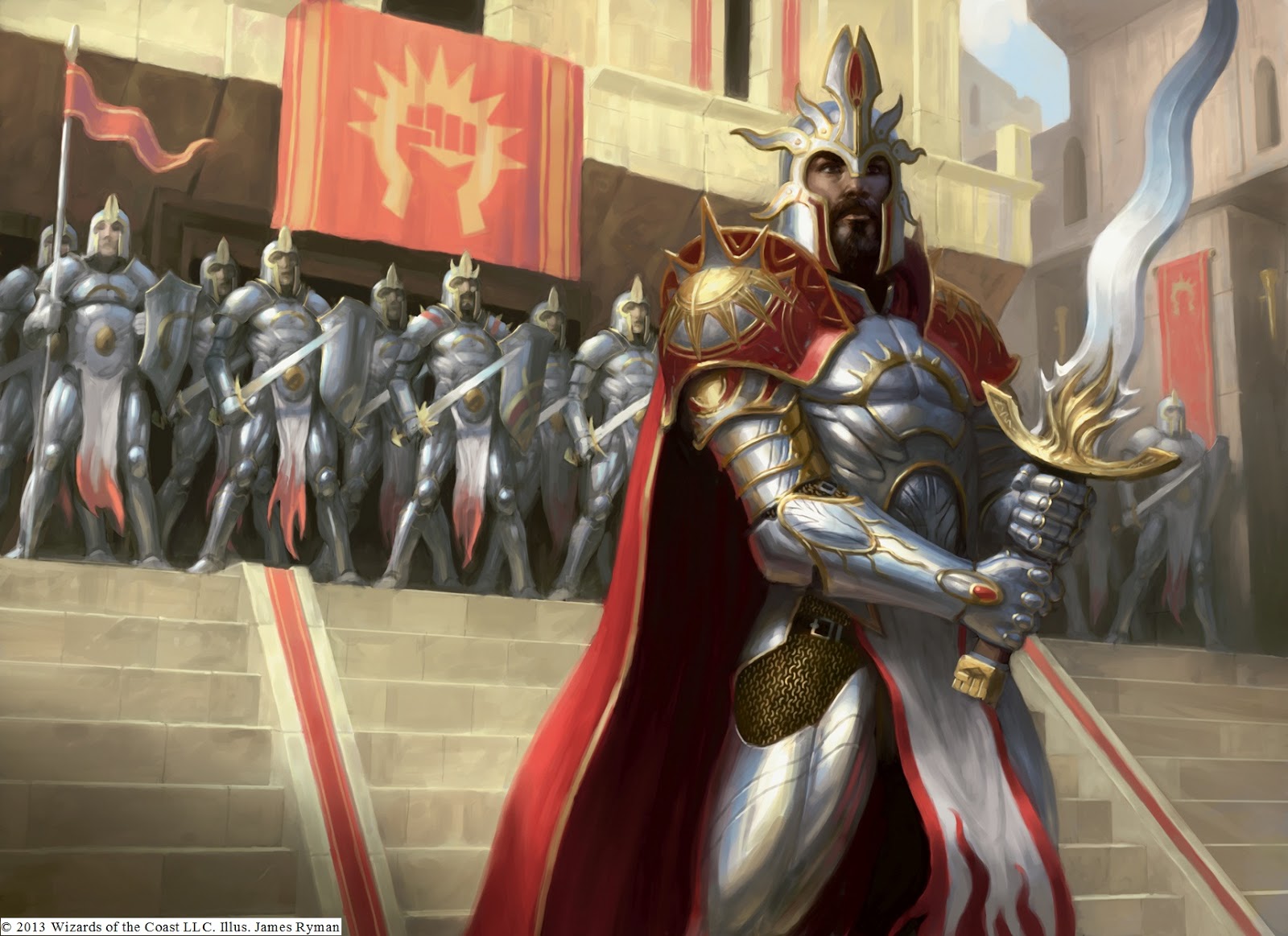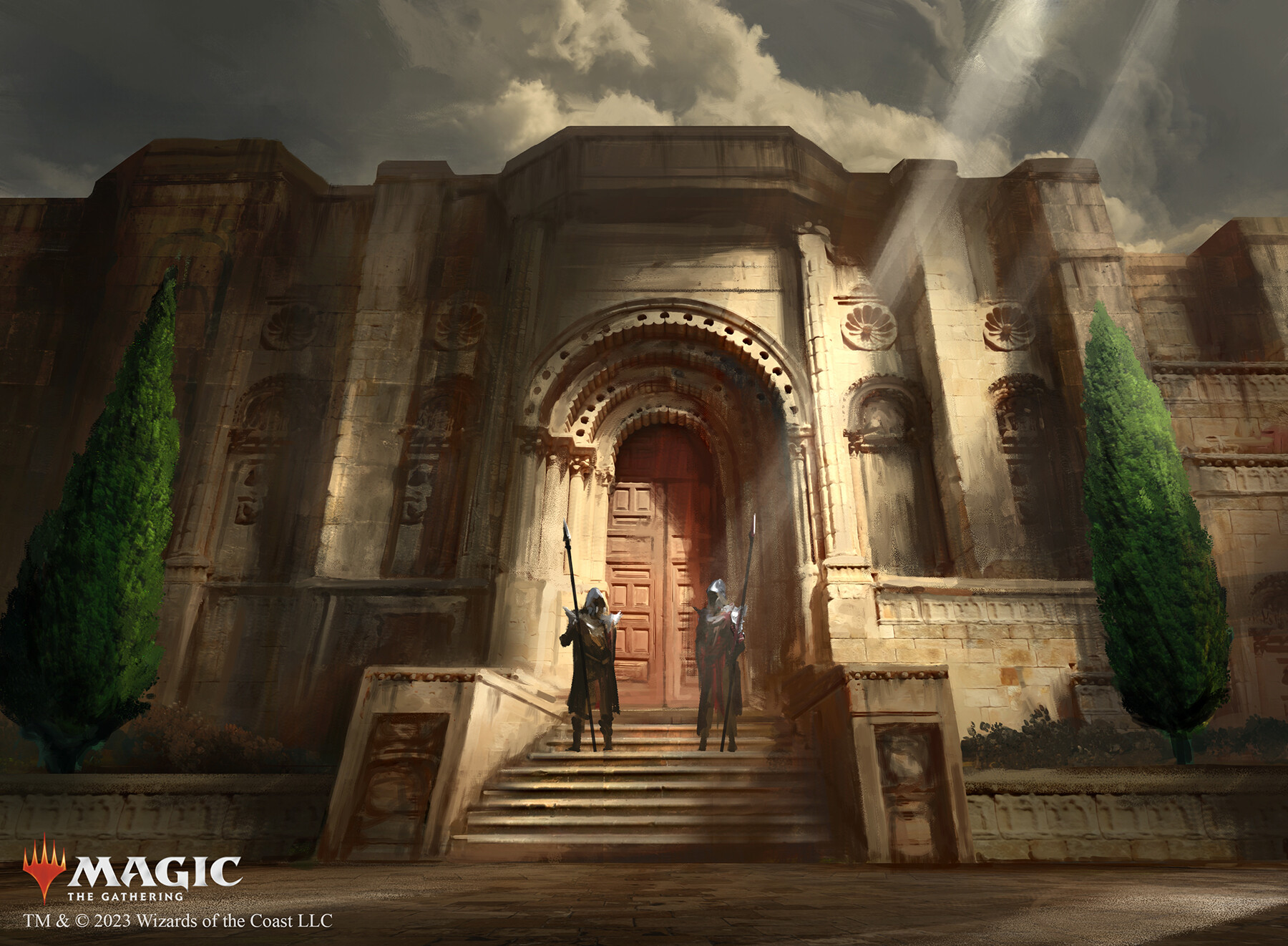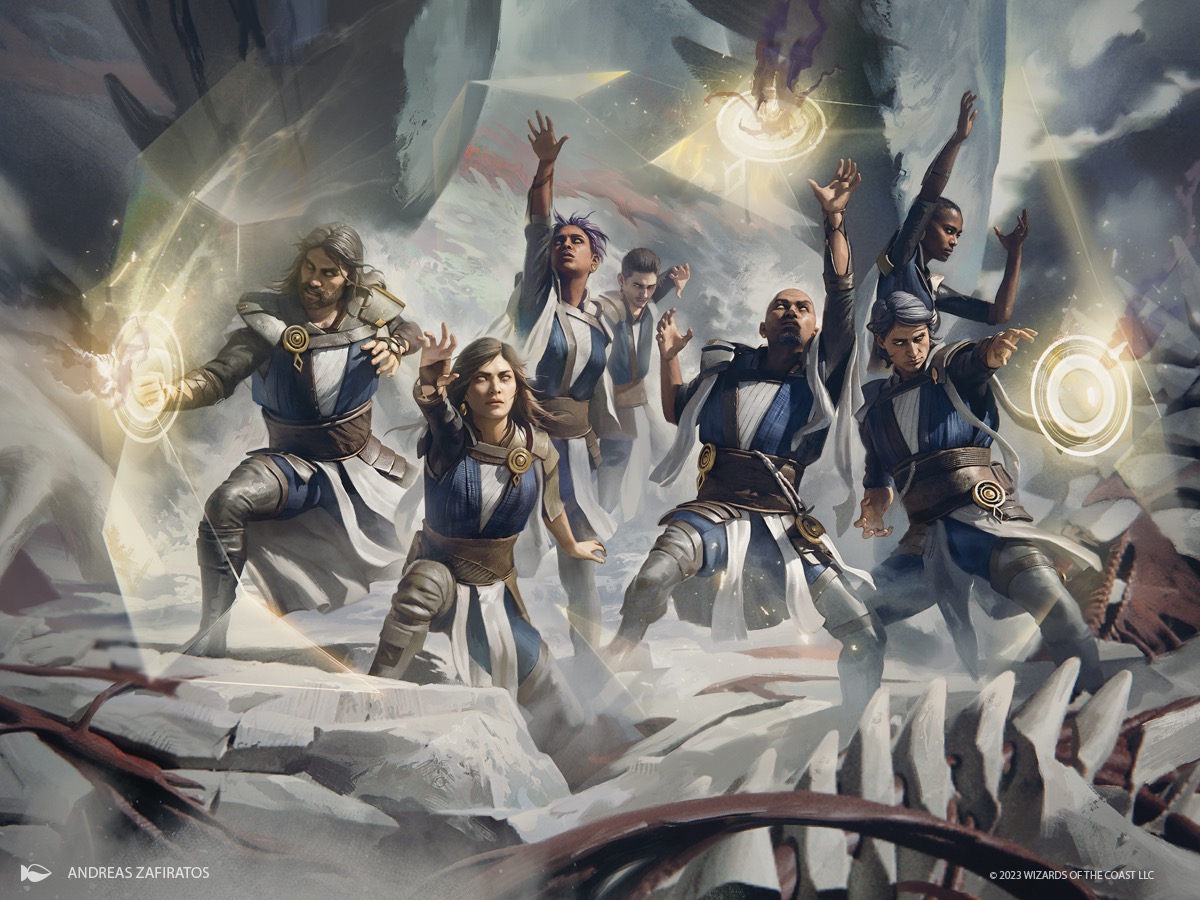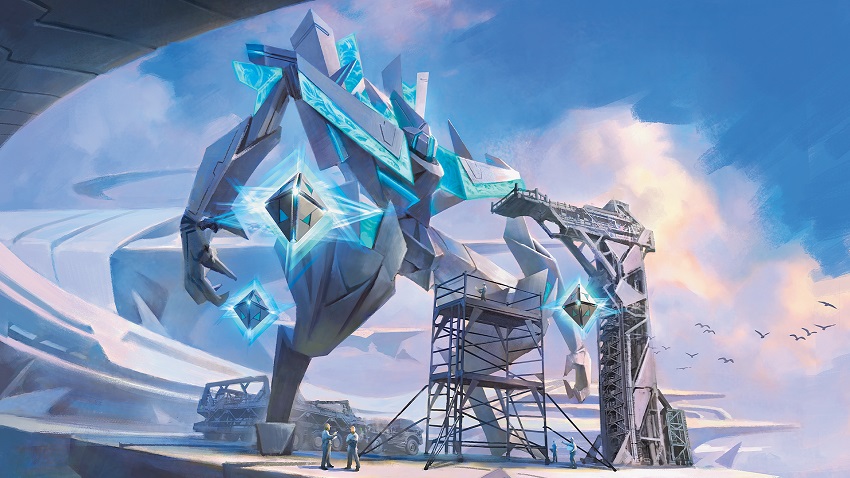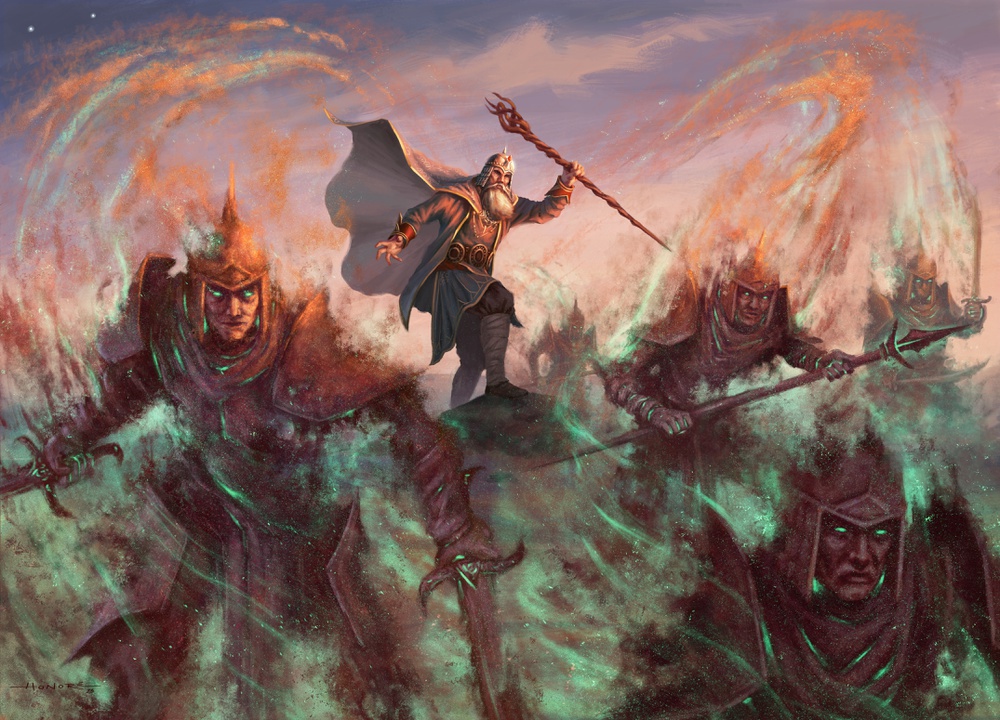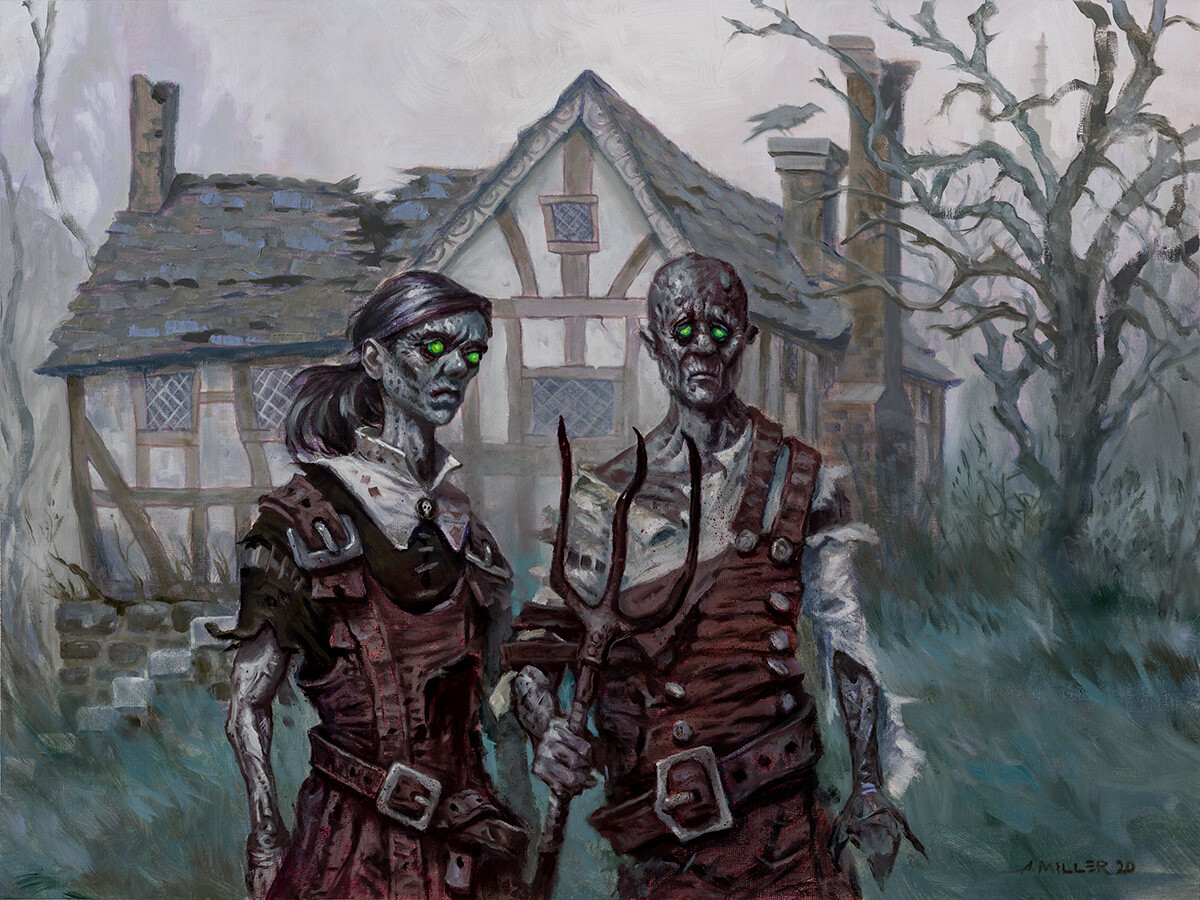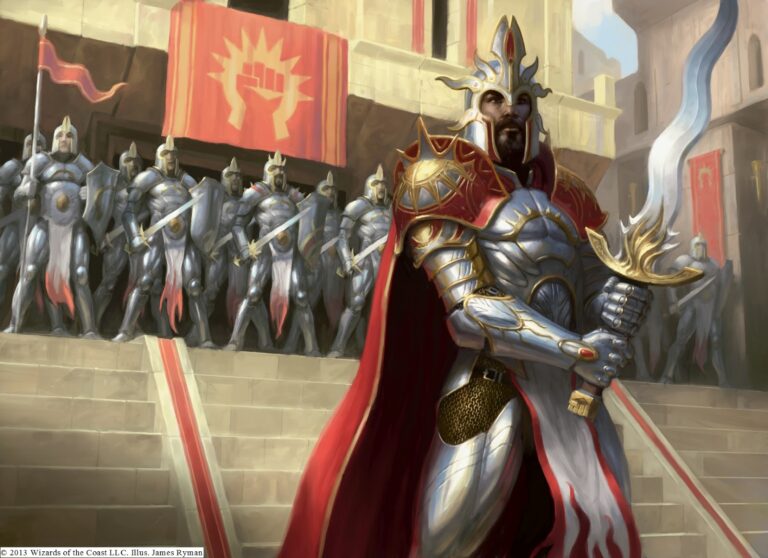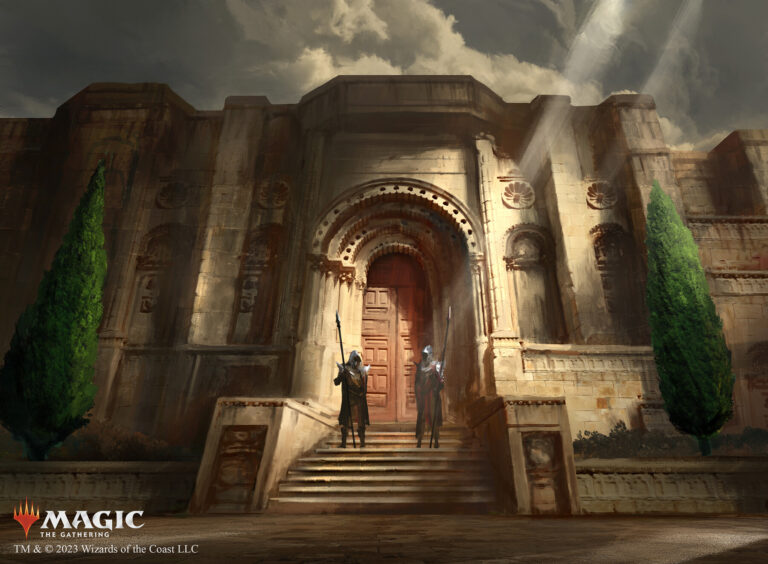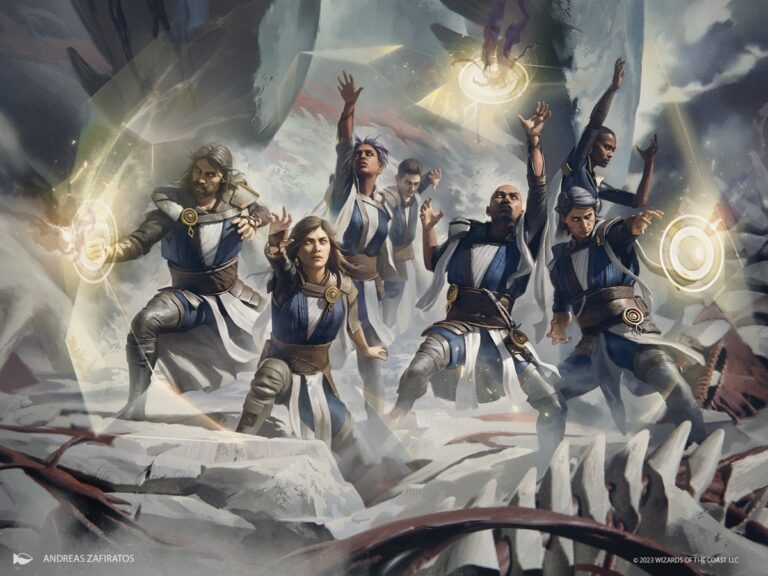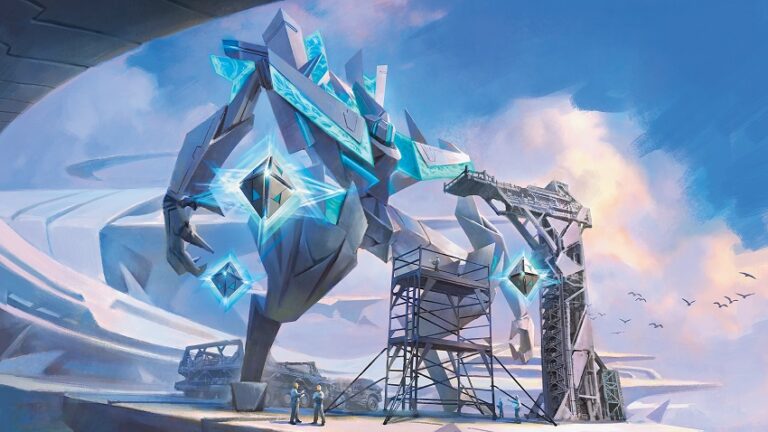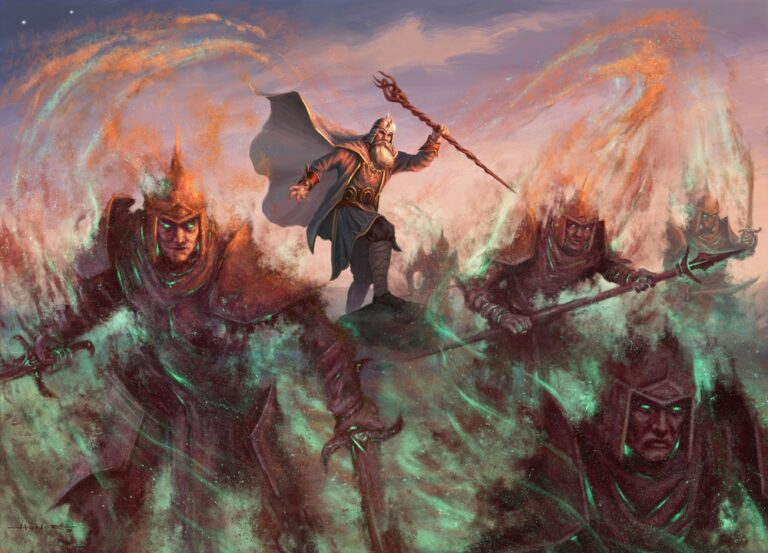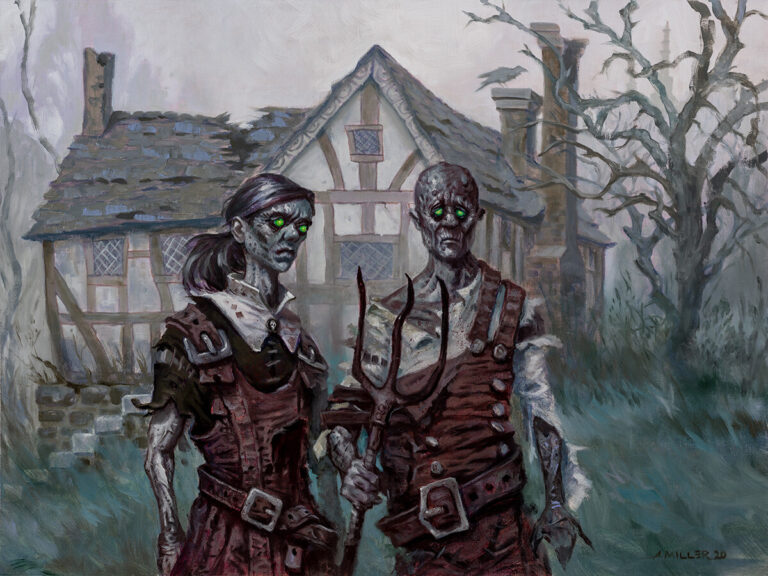“Building a good deck isn’t about turning bad cards into good cards, but finding new ways to use already strong ones instead.”
A Reddit user whose name I don’t remember.
Hello everyone, my name is Damiano (Dammarc on Moxfield) and I have been invited to talk to you about this new version of Tasigur, the Golden Fang, a Storm deck that relies on the interaction between the commander and Neoform. You can check my decklist here.
I preferred this build over other Storm alternatives because I found in it a more solid game plan, a commander that cheats on tax, and the ability to play the colour blue, which adds card selection and counter spells.
Strengths:
- Resilient and with alternative game plans that align with the deck strategy (e.g., Griselbrand, The One Ring)
- Wins quickly the game (3rd-5th turn depending on opponent’s ability to interact)
- Consistent game patterns
- Best colours in the format for Combo decks (UBX)
Weaknesses:
- Struggles with aggressive boards with swarm strategies and time-based decks
- Requires a lot of resources to end the game when your opponent has more than 40 life
- Suffers from Blood Moon and cards that consistently attack the manabase
- Not a lot flexibility in deckbuilding
The deck structure
Let’s talk about the deck, why do I put Tasigur among combo decks? Genesis Storm aside, the deck has always been identified as a midrange with some very explosive plays like Flash and Neoform. Precisely the latter has become the key engine for reshaping the deck and giving it new perspectives.
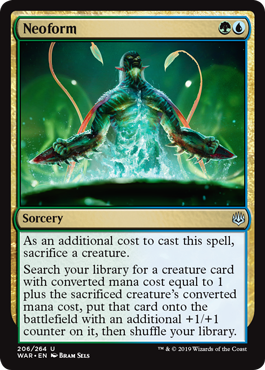
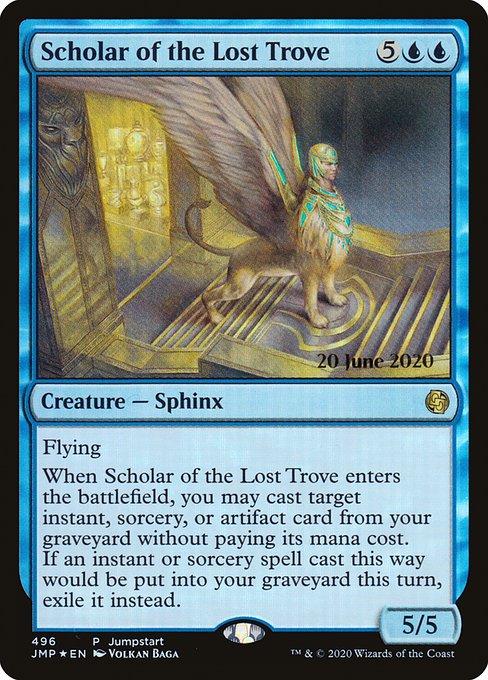
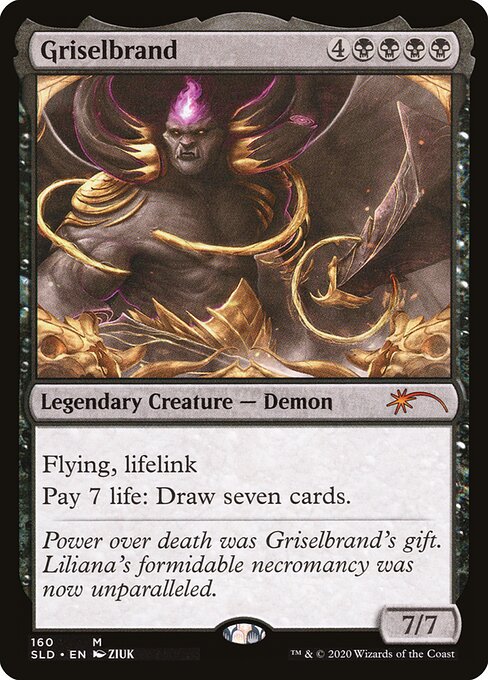
The classic ‘line’ (plan B):
- Tasigur, the Golden Fang+ Neoform = Scholar of the Lost Trove
- Scholar of the Lost Trove + Neoform from the graveyard on itself = Griselbrand.
This is the basis that I wanted to take to extremes by inserting different 8 drop instead of Griselbrand: Hoarding Broodlord!
This huge dragon along with Saw In Half is taking place in the format as an engine for various combos. The interplay between the two in the deck mimics what there was between Inalla, Archmage Ritualist and Spellseeker, allowing you to storm starting with a ‘one card combo’ (Neoform + Tasigur which is always in the command zone) and five mana available (2 colourless+U+B+G).
New Line (plan A) :
- Tasigur, the Golden Fang (⚫) + Neoform(🔵🟢) = Scholar of the Lost Trove.
- Scholar of the Lost Trove + Neoform from the graveyard on itself = Hoarding Broodlord to find Saw in Half.
- Cast Saw in Half (2 colorless +tap Broodlord with convoke), you will have 2 tokens.
- With the two copies search forLion’s Eye Diamond and Beseech The Mirror.
- Play LED, use it (⚫⚫⚫ in pool).
- Play Beseech (⚪⚫ + tap 2 tokens, ⚫ in pool) with bargain sacrificing one of the 2 copies.
- I search and cast Yawgmoth’s Will.
- Play LED and use it to add 3 black mana (⚫⚫⚫⚫ in pool).
- Saw in Half on the remaining dragon token (⚫ in pool), I create two copies that tutor Sacrifice and Dark Ritual.
- Tap one token and play Dark Ritual (⚫⚫⚫⚫ in pool), tap another token and cast Sacrifice (12x⚫ in pool).
- Play Beseech The Mirror with bargain sacrificing the token (8x⚫ in pool), search and play one black tutor (es. Wishclaw Talisman).
- Search and play (7x ⚫ in pool) Tendrils of Agony (⚫⚫⚫ in pool).
A fantastic spell lineup! With just 13 spells and 26 damage, you can win without spending any additional mana beyond the initial 2UBG.
This is the standard line, but you may have noticed that not all our mana was spent. We could have continued the spell chain to increase the damage with Tendrils of Agony.
Combo decks rely on three key factors: Speed, Interactivity, and Consistency. This deck excels in two out of the three: Speed and Consistency. It quickly sets up the conditions to start a combo with famous storm cards (e.g., Rain of Filth, Dark Ritual, and Lotus Petal), which synergize well with both the deck’s plan and Tasigur, the Golden Fang to fill the graveyard. Additionally, Neoform and Eldritch Evolution (which are effectively the same but cost one more mana) along with 11 tutors provide consistent access to the necessary cards.
Since half of the tutors cost 3 mana, I focused the rest of the spells around CMC 1 and 2. This setup allows for a mana curve that keeps the third turn open, which is often used for that purpose. Another reason for including many CMC 1 spells is the ability to cast a spell on Turn 2 while keeping a fetch land active to search for a Surveil land during the opponent’s end step. This not only helps fill the graveyard but also lets you filter the top of the deck. Searching for one of these lands during the end step is quite similar to casting a Consider.
This deck-building approach aligns with the fact that most of the most efficient cards for the archetype (card draw, discard effects, and removal) fall within this curve, fitting perfectly.
Another decision was the number of lands. I opted for a Low-Lands style (34) because having 11 one-cost cards (draw spells and cyclers) was sufficient to avoid mana issues according to Karsten’s formula. Regarding cyclers, I chose Generous Ent and Troll of Khazad-dûm over Lórien Revealed for their potential to be reanimated and initiate the combo (matching Tasigur’s CMC).
Gameplan
We’ve already discussed the winning line, but there are a few additional details needed for a complete understanding of the deck:
- The 2 colorless mana can also be obtained from creatures thanks to Hoarding Broodlord, which provides convoke for the spell. For example, Orcish Bowmasters and the Army token essentially provide two mana that can be used.
- You can also win if you reach Hoarding Broodlord without mana but have a black tutor in hand. With the dragon, tutor for Sacrifice and use the dragon to cast and sacrifice it. From the 8 mana you get, use what you need for the tutor, then get Reanimate or Animate Dead, cast it on the dragon, tutor for Saw in Half, and proceed from step 3) of the line (Note: in subsequent steps, there might be variations in the cards based on which tutor you used, but they are almost always interchangeable).
That said, the strategy heavily depends on the type of matchup, which in turn influences our decisions on initial hands and how much we can afford to mulligan. Understanding how to handle the matchup also helps us wisely choose between Neoform or Eldritch Evolution, especially in response to graveyard hate.
Let’s proceed in order. Below are my thoughts on how to approach various archetypes and notes on how to deal with the main Tier 1 decks in the format:
AGGRO
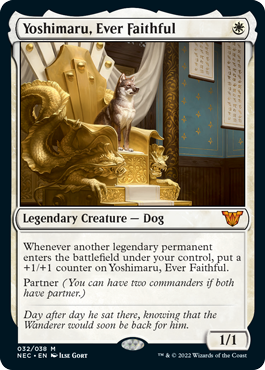
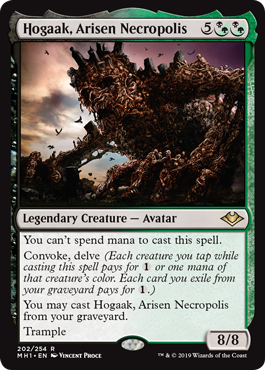
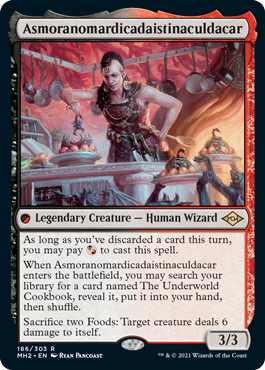
The matchup hinges on the speed of the two decks, as neither has sufficient tools for continuous control of the opponent’s plays. We’re advantaged by the fact that we need very little to assemble the combo, and even a single counter or removal spell can delay our setup by an entire turn. Another advantage is that both our Plan A (the combo) and Plan B (Griselbrand) often effectively disrupt the opponent.
The disadvantages depend on the specific decks, but sometimes you can’t mulligan forever, reactive cards don’t show up, and sometimes that’s just not enough.
- Yoshimaru, Ever Faithful/X: On the play, a discard spell can often buy us the time we need. On the draw, we need either a removal spell or a soft counter to handle the dog’s push; if we can manage the dog directly, even better. Tasigur is very useful as a blocker. Be aware of Blood Moon/Magus of the Moon and Reverent Mantra, which can be cast in response to Saw in Half to protect the dragon from black.
- Hogaak, Arisen Necropolis: The play pattern is similar to the dog deck, but Tasigur is less effective as a blocker here. There are also fewer surprises that could catch us off guard.
- Asmoranomardicadaistinaculdacar: I haven’t had the chance to test this matchup extensively, but having a commander with built-in removal for the dragon is definitely a problem, as is the Cookbook, which is hard to remove. If I had to suggest a strategy, I would say that Eldritch Evolution for Griselbrand is key.
CONTROL
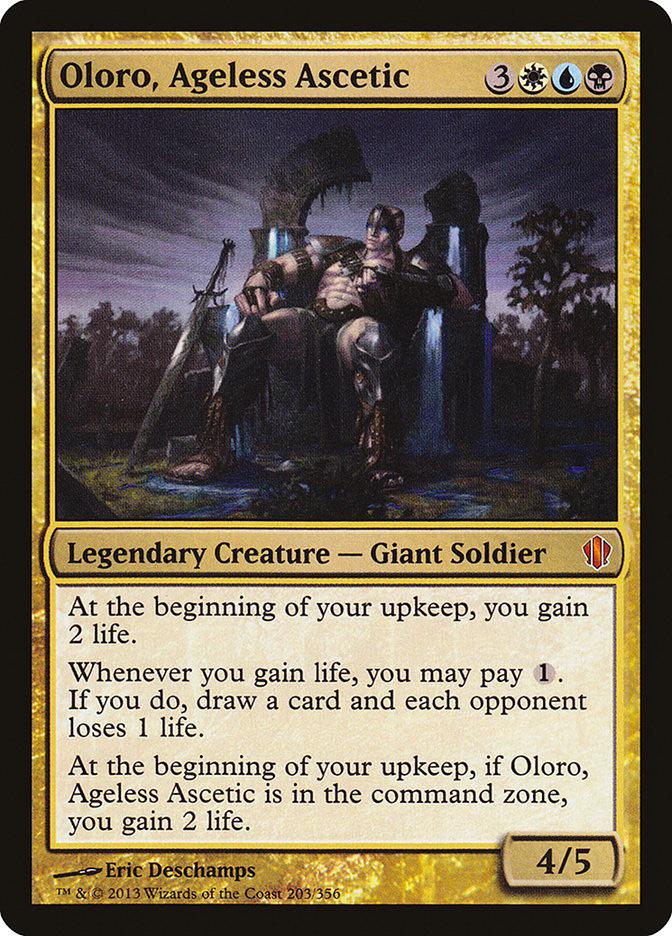
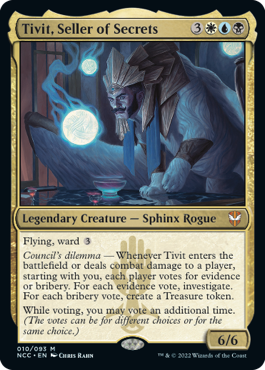
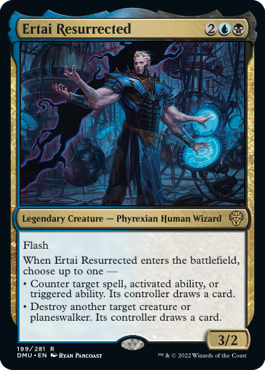
In this matchup, it’s a game of cat and mouse: we’re the ones escaping while they chase us. Gaining information about the opponent’s hand is crucial as it helps us navigate and strategize effectively. Discard spells are essential (including Peek). We need to create and recognize windows of opportunity, whether they are large or small. Be careful not to fall into Tunnel Vision, focusing solely on the combo at all costs. Remember, Plan B (Griselbrand) and Plan C (Ring) are also potential game-winning plays. Seize any opportunity that arises!
- Oloro, Ageless Ascetic: This is the toughest matchup because Oloro’s static ability gains life, which can indirectly lead to victory, pushing us away from our primary combo. Aim for an aggressive hand that seeks a quick win or is highly interactive. Don’t hesitate to put Tasigur on the battlefield if you think it can draw an instant removal or a counter useful against the combo..
- Tivit, Seller of Secrets: Compared to Oloro, this deck has a real clock, but it usually doesn’t come online fast enough to significantly impact the game. Like with Oloro, sorcery-speed removals and wipes are dead draws against him. Be cautious of Wandering Emperor, which can exile the dragon before Saw in Half resolves.
Note: Against both of these decks, be very cautious of Teferi, Time Raveler, which can block Scholar in the Neoform combo and also affect Beseech the Mirror.
- I could continue for hours describing each control deck, but the patterns are quite similar. Honorable Mentions go to Ertai Resurrected, which is incredibly versatile against us, and Eris, Roar of the Storm. While Eris has many versions, even the control ones present a challenging mix of counterspells and pressure, with flying creatures that Tasigur, the Golden Fang always struggles against.
MIDRANGE
As of now, there are few of these in the meta, but they should be respected because once they hit T4/T5, the individual quality of their cards can really tear us apart. It’s crucial to project the turns ahead to determine if we can defeat them before they can set up their game plan.
- Slimefoot and Squee: Bolt the bird targeting the elves on turn 1 to disrupt their strategy from the start. We need to act quickly, as the situation becomes much more difficult from the midgame due to the high power level of their individual cards. Keep a close eye on Endurance, as well as the Magus that might be fetched with Pod effects.
META CALLS
One of the major drawbacks of the deck is that, while the core shell is very solid, it is also quite rigid. With such a specific combo, it’s challenging to find space for more efficient cards beyond those already in the deck. However, let’s still discuss some notable exclusions and choices.
Free spells: Grief, Subtlety e Force of Negation.
Force of Negation is unnecessary when we’re going off with the combo, while Grief is hard to pitch because many of our black spells are essential. Subtlety could be considered in place of Miscalculation, but there needs to be a compelling reason to include it.
Removal: Pick Your Poison, Toxic Deluge, Pernicious Deed e Snuff Out.
I’ve always appreciated Snuff Out, but some of the most dangerous cards for us are black: Dauthi Voidwalker, Opposition Agent, and an early-game Orcish Bowmasters. While the two wipes are powerful, they clash with the deck’s curve. However, Pick Your Poison stands out as a nearly auto-include if Ring is in the format. The presence of Eris in the meta and the ongoing challenges with flying creatures have pushed me to consider it; I just need to find the right slot. I’ll keep you updated.
Modern Horizons 3: Fanatic of Rhonas, Kozilek’s Unsealing, Shifting Woodland e Sink into Stupor
As of writing, MH3 has just been released, and I couldn’t pass up the opportunity to mention any potential new cards for the deck.
Fanatic has caught my attention the most. On turn 2, it provides a blocker that can return if the game goes long. Additionally, on turn 3, if you play Tasigur, it gives you 4 green mana, which expands combo lines and allows for a third Eldritch Evolution. The synergy of these two turns convinced me to include it.
Kozilek theoretically allows you to play Tasigur alongside two smaller friends, giving us 2 additional mana for the combo. However, I fear that dropping a 3-mana card that doesn’t impact the board immediately might be too disadvantageous in this format. It’s a shame.
Shifting initially seemed like an auto-include. The ability to have a second Tasigur or Scholar for the combo, or even a Griselbrand, presents intriguing Plan C/D options. However, I’m concerned that achieving delirium in this deck might be too challenging except in rare situations. Additionally, including mono-colored lands is risky given their scarcity. I’ll test it further, but I’m not convinced yet.
Sink looked promising when it was first spoiled—a versatile card that could serve as either a land or a way to solve awkward situations. However, it has turned out to be too heavy as a spell and not impactful enough as a land. It’s definitely a top card, but it struggled in this deck. If more mana-fixing lands are introduced in the future, it might make sense to replace the UB checkland with it, but for now, it remains in the “considering” category.
CONCLUSIONS
In my opinion, the deck is more than playable. It ultimately has a very consistent plan, coupled with colors that grant access to all the answers you might want, depending on the meta you expect.
Personally, I consider it one of the most powerful combos in the format, capable of handling complex situations and offering very solid alternative plans. Unfortunately, I don’t have much data to back up this claim, aside from the fact that I’ve never lost to Alessandro Rizzo 😛
The main drawbacks are the need for practice to master the gameplay lines (especially the alternative ones), the difficulty in reacting to unexpected hate pieces, and the chance of drawing combo pieces at inconvenient times.
Thank you for taking the time to explore the deck. I hope you enjoy it as much as I do, if not more!
Written by
Damiano Marchi

